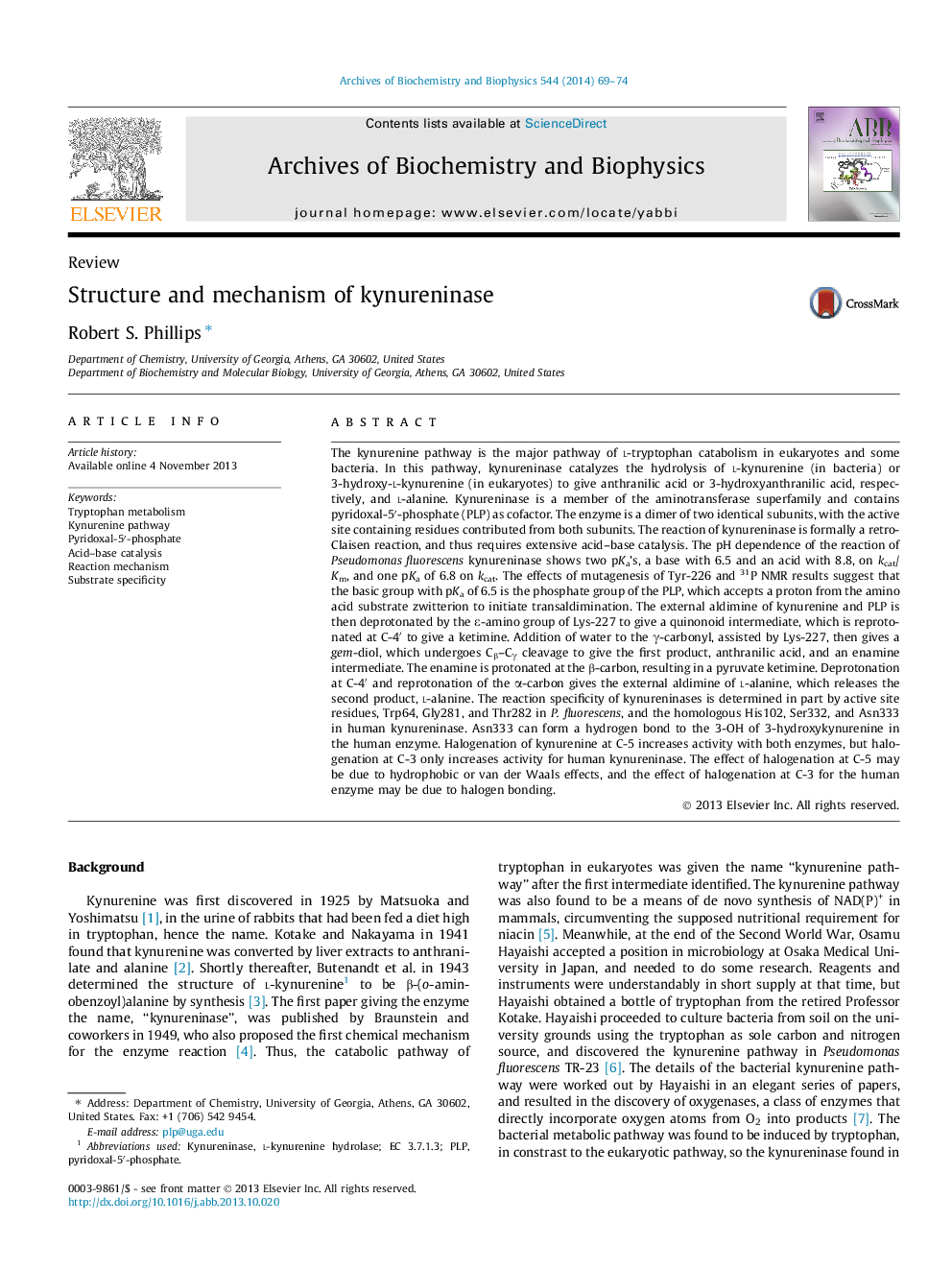| کد مقاله | کد نشریه | سال انتشار | مقاله انگلیسی | نسخه تمام متن |
|---|---|---|---|---|
| 1925233 | 1536355 | 2014 | 6 صفحه PDF | دانلود رایگان |
• A pyridoxal-5′-phosphate catalyzed retro-Claisen reaction.
• General acid/base catalysis is necessary in the mechanism.
• Tyr-226 hydrogens bonds to the PLP phosphate.
• Y226F mutant enzyme has low activity.
• The PLP phosphate is an acid/base catalyst.
The kynurenine pathway is the major pathway of l-tryptophan catabolism in eukaryotes and some bacteria. In this pathway, kynureninase catalyzes the hydrolysis of l-kynurenine (in bacteria) or 3-hydroxy-l-kynurenine (in eukaryotes) to give anthranilic acid or 3-hydroxyanthranilic acid, respectively, and l-alanine. Kynureninase is a member of the aminotransferase superfamily and contains pyridoxal-5′-phosphate (PLP) as cofactor. The enzyme is a dimer of two identical subunits, with the active site containing residues contributed from both subunits. The reaction of kynureninase is formally a retro-Claisen reaction, and thus requires extensive acid–base catalysis. The pH dependence of the reaction of Pseudomonas fluorescens kynureninase shows two pKa’s, a base with 6.5 and an acid with 8.8, on kcat/Km, and one pKa of 6.8 on kcat. The effects of mutagenesis of Tyr-226 and 31P NMR results suggest that the basic group with pKa of 6.5 is the phosphate group of the PLP, which accepts a proton from the amino acid substrate zwitterion to initiate transaldimination. The external aldimine of kynurenine and PLP is then deprotonated by the ε-amino group of Lys-227 to give a quinonoid intermediate, which is reprotonated at C-4′ to give a ketimine. Addition of water to the γ-carbonyl, assisted by Lys-227, then gives a gem-diol, which undergoes Cβ–Cγ cleavage to give the first product, anthranilic acid, and an enamine intermediate. The enamine is protonated at the β-carbon, resulting in a pyruvate ketimine. Deprotonation at C-4′ and reprotonation of the α-carbon gives the external aldimine of l-alanine, which releases the second product, l-alanine. The reaction specificity of kynureninases is determined in part by active site residues, Trp64, Gly281, and Thr282 in P. fluorescens, and the homologous His102, Ser332, and Asn333 in human kynureninase. Asn333 can form a hydrogen bond to the 3-OH of 3-hydroxykynurenine in the human enzyme. Halogenation of kynurenine at C-5 increases activity with both enzymes, but halogenation at C-3 only increases activity for human kynureninase. The effect of halogenation at C-5 may be due to hydrophobic or van der Waals effects, and the effect of halogenation at C-3 for the human enzyme may be due to halogen bonding.
Figure optionsDownload high-quality image (120 K)Download as PowerPoint slide
Journal: Archives of Biochemistry and Biophysics - Volume 544, 15 February 2014, Pages 69–74
